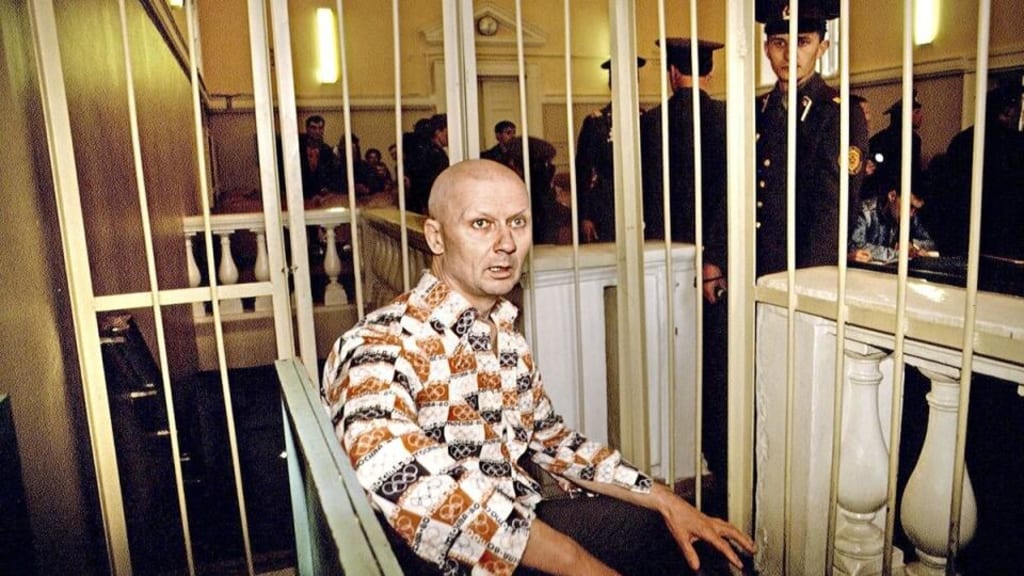Andrei Chikatilo
Unmasking the Monster: Andrei Chikatilo's Double Life

**The Chilling Tale of Andrei Chikatilo: The Butcher of Rostov**
The world has seen its fair share of heinous criminals throughout history, but some individuals leave an indelible mark on the annals of infamy. Andrei Chikatilo, also known as the Butcher of Rostov, was one such notorious serial killer. Born on October 16, 1936, in the Soviet Union, Chikatilo's dark and twisted journey took him on a path of unspeakable violence, leaving a trail of over 50 victims in his wake. This article delves into the life, crimes, and capture of one of the most horrifying serial killers in modern history.
**Early Life and Troubled Youth**
Chikatilo's early life was marked by tragedy and hardship. Growing up during World War II, he experienced the horrors of the Ukrainian famine, known as the Holodomor, which resulted in the death of millions due to starvation. This bleak environment undoubtedly had a significant impact on his psyche.
As a child, Chikatilo was introverted and suffered from chronic impotence, factors that would later play a crucial role in his violent tendencies. Bullied relentlessly for his physical and social inadequacies, he developed a deep-rooted hatred for the opposite sex and a burning desire for revenge.
**A Double Life: The Mask of a Family Man**
On the surface, Chikatilo led a seemingly ordinary life. He married, had two children, and worked as a teacher. However, underneath this façade of normalcy, a monstrous alter ego lurked. Beginning in 1978, he embarked on a brutal spree of rape, mutilation, and murder, targeting women and children.
Chikatilo's modus operandi was gruesome and terrifyingly methodical. He lured his victims, often runaways or vagrants, into secluded areas before subjecting them to unspeakable horrors. He gained sexual satisfaction from their suffering and savagely mutilated their bodies post-mortem, often biting off body parts.
**The Authorities Close In**
Chikatilo's reign of terror lasted over a decade, terrorizing the region and baffling law enforcement. The authorities struggled to find a pattern in the killings, and lack of advanced forensic technology hindered their efforts.
Despite this, Chikatilo's actions attracted the attention of Soviet authorities, and a massive manhunt ensued. As the body count rose, the pressure on the police intensified, leading to a series of wrongful arrests and executions. The police faced immense criticism for their failure to capture the elusive killer.
**The Breakthrough and Capture**
In 1990, the investigation finally experienced a breakthrough when the police apprehended Chikatilo for suspicious behavior near a crime scene. Through meticulous questioning and the use of forensic evidence, they connected him to several murders.
Chikatilo's arrest unearthed a deeply disturbed psyche. He confessed to all the killings, providing explicit details of his crimes. His trial began on April 14, 1992, where he faced 53 charges of murder, attempted murder, and sexual assault. The courtroom was inundated with media and spectators, horrified by the sheer depravity of his actions.
**Psychological Evaluation: Understanding the Monster**
Psychologists who examined Chikatilo determined that he suffered from a combination of personality disorders, including sadism and necrophilia. His inability to perform sexually led to intense frustration, which he channeled into a perverse desire for violence and murder. Throughout the trial, he displayed a chilling lack of remorse for his actions, further confirming the depth of his psychopathy.
**The Verdict and Execution**
On October 15, 1992, the
jury found Chikatilo guilty on all counts. The judge sentenced him to death for his monstrous crimes, stating that he was beyond rehabilitation and that society needed to be protected from him.
On February 14, 1994, Andrei Chikatilo met his end by firing squad. His execution brought an end to a reign of terror that had gripped the Soviet Union, and his name became synonymous with horror and evil.
**Legacy and Lessons Learned**
The case of Andrei Chikatilo left an indelible mark on criminal psychology and law enforcement practices. His crimes prompted the introduction of advanced forensic techniques and profiling methods, which have since become invaluable tools in solving and preventing similar atrocities.
Chikatilo's story is a haunting reminder of the darkness that can lurk within the human mind. It serves as a testament to the importance of vigilance, effective law enforcement, and mental health awareness in identifying and apprehending individuals who pose a danger to society.
The Butcher of Rostov's chilling tale will forever be remembered as one of the most disturbing and shocking chapters in the history of serial killers, serving as a cautionary tale of the capacity for human evil that lies hidden beneath a veneer of normalcy.






Comments
There are no comments for this story
Be the first to respond and start the conversation.